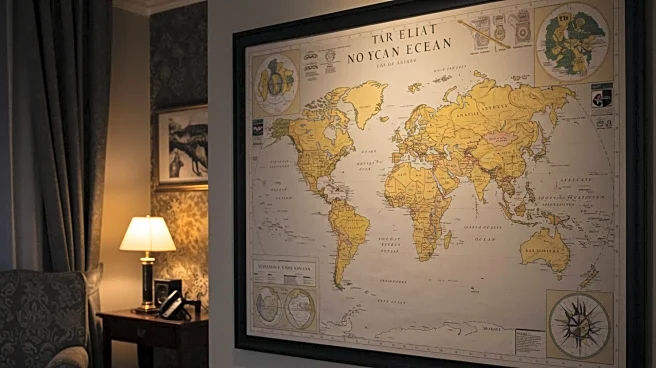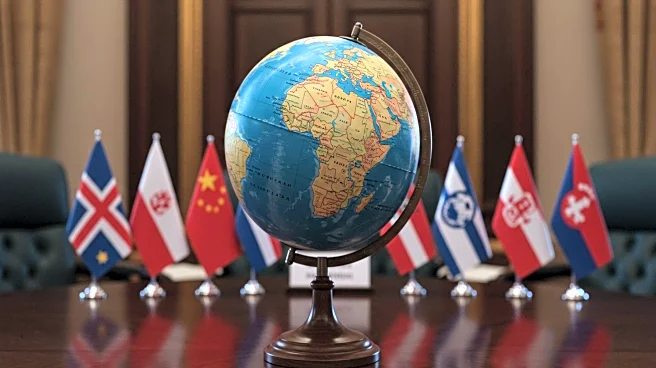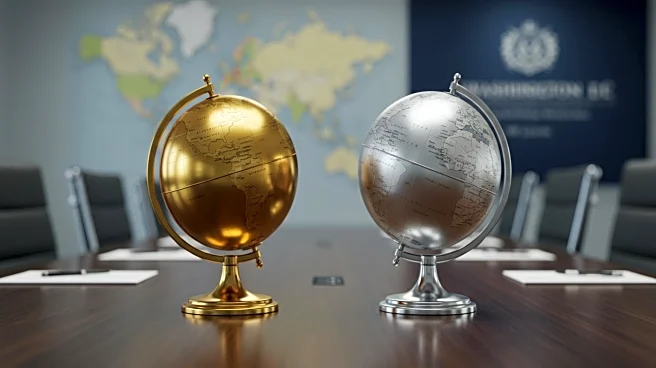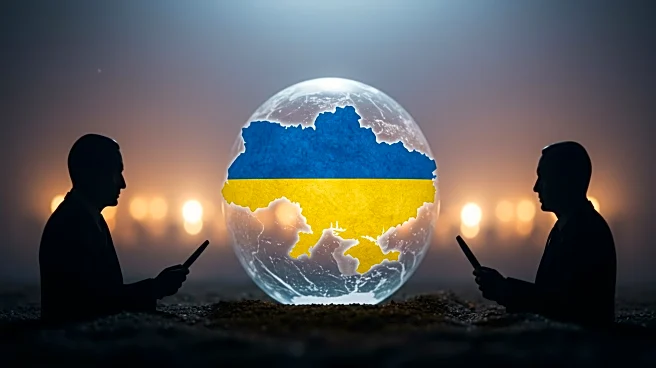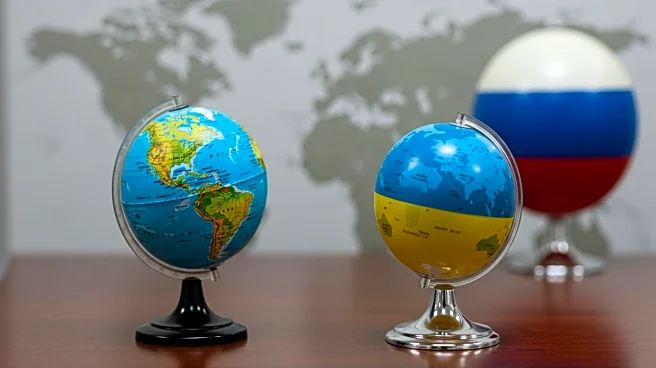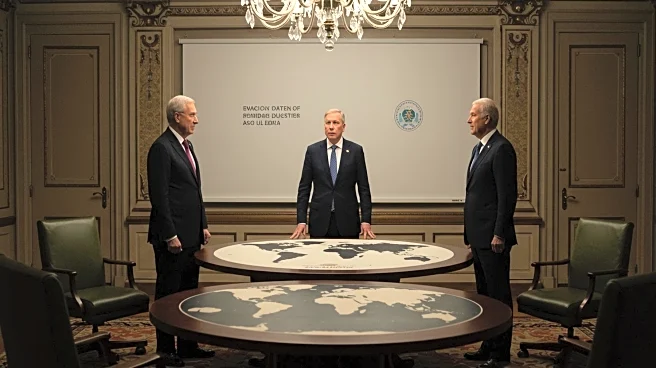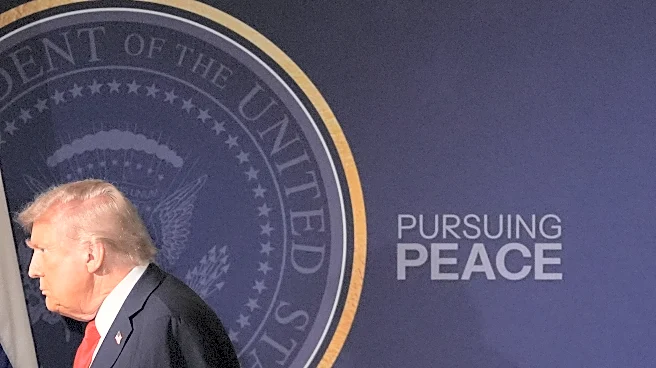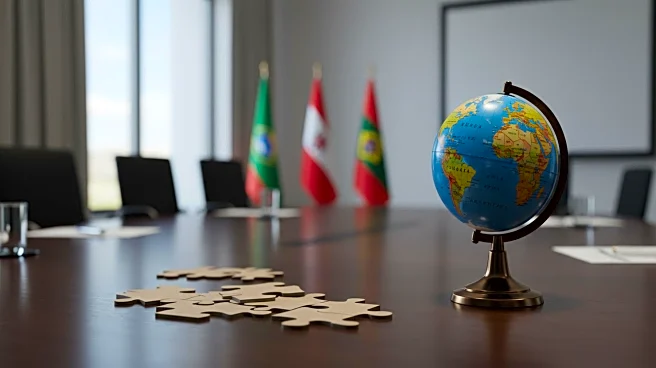What's Happening?
A map in the Oval Office depicting areas of Ukraine under Russian control has played a crucial role in shaping President Trump's view of the conflict. The map highlights the extent of Russian occupation, emphasizing the need for territorial compromise. President Zelenskyy challenged the accuracy of the map during discussions with President Trump, arguing against territorial concessions. The map's portrayal of Russian control has influenced the narrative around peace talks and territorial negotiations.
Why It's Important?
The use of visual aids like maps in diplomatic discussions can significantly impact perceptions and decision-making. The emphasis on territorial control underscores the complexities of negotiating peace in conflicts involving territorial disputes. The portrayal of Russian occupation raises concerns about setting precedents for military aggression and annexation, with potential implications for international law and norms.
What's Next?
Further discussions are expected to address territorial negotiations and security guarantees. The role of visual aids in shaping diplomatic narratives will continue to be a focus, with efforts to ensure accurate representation of territorial control. The possibility of a direct meeting between President Zelenskyy and President Putin remains uncertain, with diplomatic efforts continuing to push for a resolution.
Beyond the Headlines
The ethical implications of territorial concessions are significant, as they could legitimize military aggression and territorial annexation. The long-term impact on international law and norms against forceful territorial acquisition is profound, potentially affecting global conflict resolution strategies.
